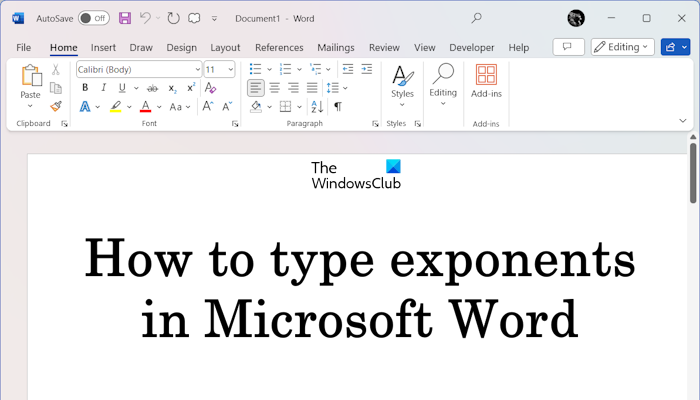
Sometimes, we need to enter scientific notations or mathematical expressions in a document. If you do not know how to type such characters in Microsoft Word, this article will help you. In this article, we will show you how to type exponents in Microsoft Word.

We will show you the following methods to type exponents in Microsoft Word.
Let’s see all these methods in detail.
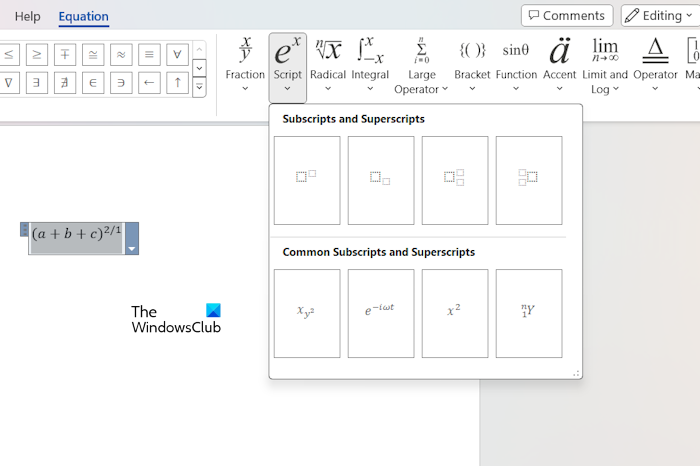
You can also write exponents by inserting a symbol in your Word document. The following instructions will guide you on this:
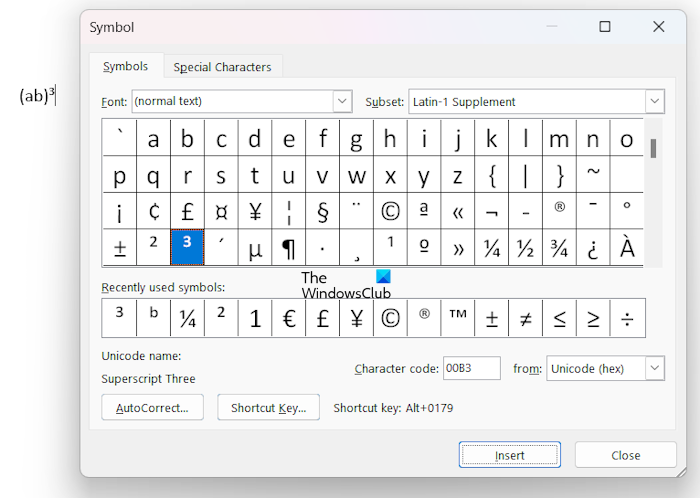
To find the exponents quickly, you can select different subsets. For example, the Latin-1 Supplement subset contains only three values as exponents, 1, 2, and 3. Values from 4 to 9 are available as exponents in the Superscripts and Subscripts subset.
Once you are done, close the Symbol window.
This is the easiest method to type exponents in your Word document. You can use a keyboard shortcut to make any value as an exponent. Simply select that value and press the keyboard shortcut.
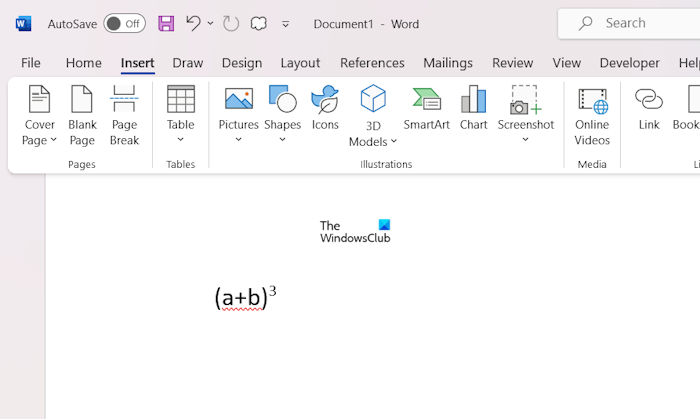
Suppose you want to type the exponent value, say cube of (a+b). Type (a+b)3, then select 3 in this equation and then press the Ctrl Shift = keys. You will get the required result. In this way, you can type any exponent equation in Microsoft Word by using the keyboard shortcut.
That’s it. I hope this helps.
It depends on the application you are using to type exponents with the keyboard. Different applications may have different keyboard shortcuts assigned to type exponents. For example, in Microsoft Word, the keyboard shortcut to type exponents is Ctrl Shift =. In Google Docs, the keyboard shortcut to type exponents is Ctrl + . (Period).
Different applications may have a different way of typing or inserting an exponent. If you use Microsoft Word, you can type 4 as the exponent by using the Symbol chart or keyboard shortcut. The keyboard shortcut is the easiest way to type exponents.
Published on March 4, 2024 Tags: Word

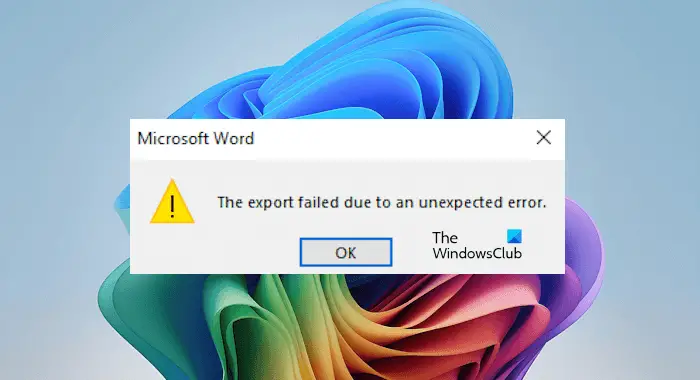
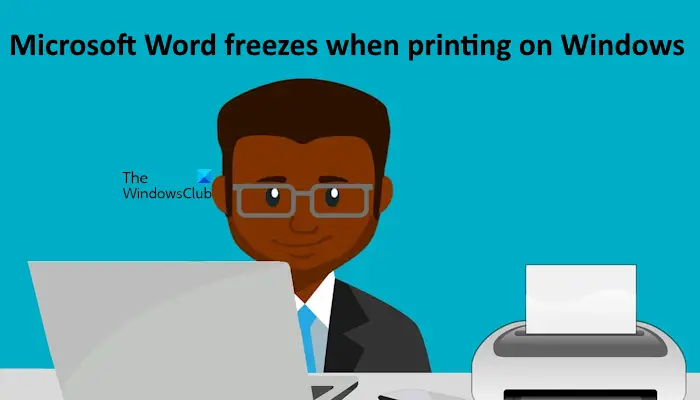
Nishant is an Engineering graduate. He has worked as an automation engineer in the automation industry, where his work included PLC and SCADA programming. Helping his friends and relatives fix their PC problems is his favorite pastime.